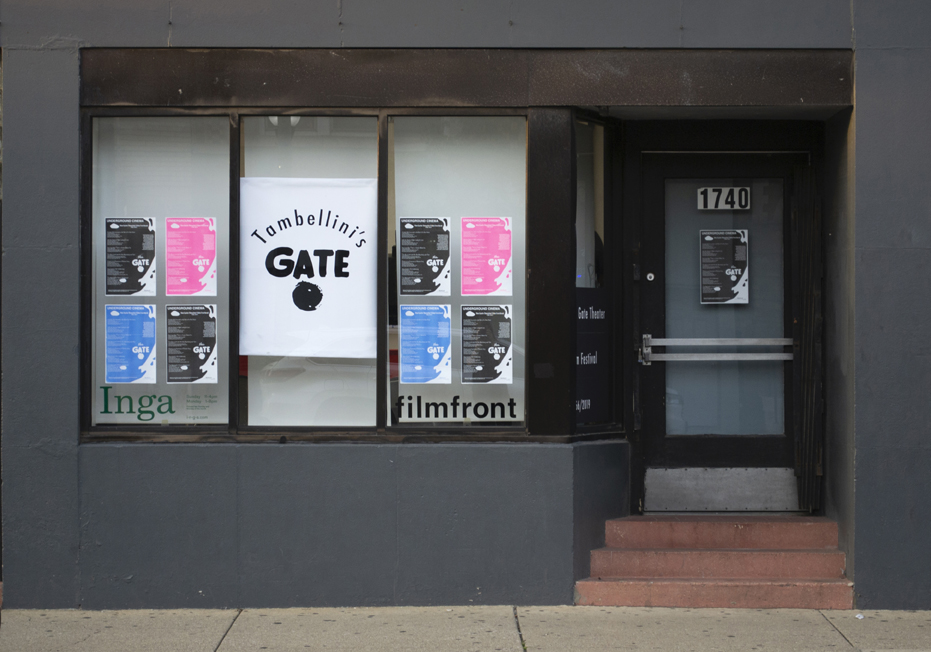
The Gate Theater Film Festival 1966/2019:
a week-long 16mm-film festival
curated from
The Gate Theater program listings (1966-1968)
filmfront (Chicago, IL)
September 24-30, 2019

THE GATE THEATER FILM FESTIVAL 1966/2019 is a week-long, 16mm-film festival comprising a selection of films that were featured at the historic The Gate Theater. Located on the Lower East Side of New York City, across the street from St. Marks Church-in-the-Bowery, The Gate Theater was a leading venue for independent films between 1966 and 1968. This artist-run cinema was managed by Elsa Tambellini, below The Black Gate Theater—New York’s first electromedia-performance space, founded by Aldo Tambellini.
The Festival includes projections of rarely displayed archival film prints by Bruce Baillie, Paul Bartel, David Bienstock, Abbe Borov, Stan Brakhage, Bob Cowan, Storm De Hirsch, Maya Deren, Robert Downey Sr., Peter E. Goldman, Ed Emshwiller, Peter Gessner, Takahiko Iimura, Stanton Kaye, George Kuchar, Mike Kuchar, Willard Maas, Marie Menken, Ron Rice, José Rodríguez-Soltero, Mark Sadan, Jack Smith, Yoichi Takabayashi, Aldo Tambellini, Stan VanDerBeek, and Jud Yalkut.
Many of the films included in THE GATE THEATER FILM FESTIVAL 1966/2019 were part of The Gate Theater’s New Visions Festival, organized in protest against the exclusion of independent filmmakers from the 4th New York Film Festival. Together these films represent the beginning of a new era, when 16mm film and recording equipment became accessible to self-producing artists who worked in experimental ways to express transgressive ideas—regarding gender, politics, and sexuality—that were culturally censored in the 1960s.

*The Screenings*
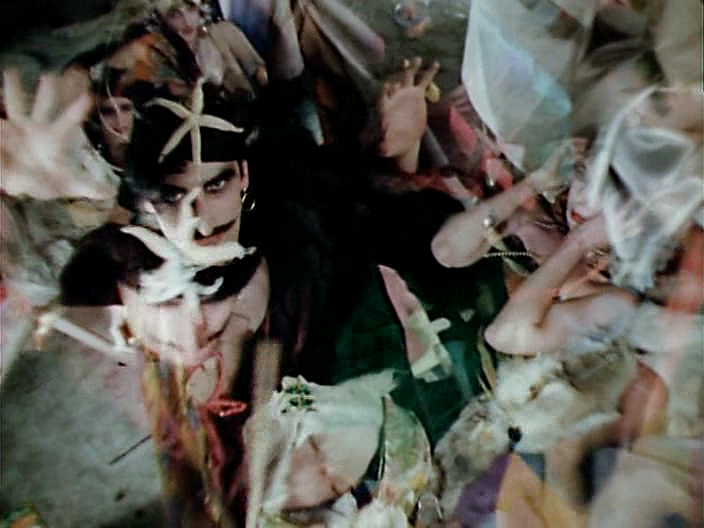
A World Half-Consumed in the Heat of Its Own Desire
Tuesday, September 24, 2019
A World Half-Consumed in the Heat of Its Own Desire includes: Jack Smith’s “No President,” Ron Rice’s “Chumlum,” José Rodríguez-Soltero’s “Jerovi,” and Mike Kuchar’s “Green Desire.”
Jack Smith’s “No President” (1967, 45 min) is a descendent of the film performance “Kidnapping and Auctioning of Wendell Willkie by the Love Bandit,” which Jack Smith premiered at The Gate Theater from March 27 to April 9, 1968. “No President” contains segments from Wendell Willkie’s presidential campaign footage interwoven with scenes of Jack Smith’s creatures, from his previous shorts. This feature-length film was made as a political response to the 1968 presidential election, which saw the Republican nominee, former Vice President Richard Nixon, defeat the Democratic nominee, incumbent Vice President Hubert Humphrey. Jack Smith (1932-1989) was a self-taught artist who was recognized by theater critic Richard Foreman as “the hidden source of…experimental American theater.”
Ron Rice’s “Chumlum” (1964, 26 min) originally screened at The Gate Theater’s Classics of the Underground program in December 1967. Strongly influenced by Jack Smith’s evocative performances, “Chumlum” includes most of the cast from Jack Smith’s film “Normal Love.” Set mostly around a suspended hammock in Ron Rice’s loft, the filmmaker's direct in-camera editing presents a supersaturated alternative reality of luscious colors and textures, sensual actors, and trance-inducing sounds. P. Adams Sitney described it as “a reverie in which time is stretched or folded over itself.” This film is titled after the cimbalom instrument played throughout the soundtrack by Angus McLise.
José Rodríguez-Soltero’s “Jerovi” (1965, 11.5 min) is a silent color film that was originally screened as part of The Gate Theater’s opening New Visions Festival. Featuring Jerovi Vail Sanson, in and out of a luxurious brocade robe, the film was entirely shot at the Golden Gate Park in San Francisco. Originally described by Gregory Markopoulos as “pornographic,” this film is more erotic than exploitive; “Jerovi” strongly affirms the emerging liberation of self-awareness, confidence, love, and acceptance of one’s self.
Mike Kuchar’s “Green Desire” (1966, 20 min) is a color film that originally screened at The Gate Theater’s New Visions Festival. More atmospheric than narrative, the film features young adults wandering through tall field grasses and expansive sand dunes, frequently overflowing with unsatiated yearnings. The soundtrack by Bob Cowan allows the screams of katydids to replace a traditional script.

Walk the Streets at Night, Looking for Love
Wendsday, September 25, 2019
Walk the Streets at Night, Looking for Love includes: Stanton Kaye’s “Georg,” Stan Brakhage’s “Reflections on Black,” Peter E. Goldman’s “Night Crawlers,” and Willard Maas’s “Image in the Snow.”
Stanton Kaye’s “Georg” (1964, 55 min) was the opening feature of The Gate Theater’s New Visions Festival. Set after World War II, the film is a biopic that tells the story of a young German man who, having lost his affection for civilization, attempts to establish a honey farm in the uninhabited hills of California and build a new life with his beautiful, pregnant wife. Their fate is foreshadowed by the development of a U.S. military missile base nearby.
Stan Brakhage’s “Reflections on Black” (1955, 12 min) was screened in the Erotica 1968 program at The Gate Theater in April 1967. This black and white film is one of Stan Brakhage’s early psychological films. It depicts the daily routine of men, drained of energy, coming home in the shadows of the dark night after a long day at work. Ominous and emotionally detached, the protagonists have scratched-out eyes. One after another, they enter barren tenement apartments, greet their partners, and experience hallucinations of sweet affection or violent aggression that have been stripped of agency.
Peter E. Goldman’s “Night Crawlers” (1964, 4 min) was also screened at the New Visions Festival. This black and white film was shot in New York City’s Times Square on 42nd Street at night. Its slow motion and reverse-negative print amplifies the experience of alienation felt within the city, despite the abundance of life and flashing advertisements depicted.
Willard Maas’s “Image in the Snow” (1948, 29 min) was screened as part of the Underground Horror Show at The Gate Theater in October 1966. It was codirected by Marie Menken, his wife, and accompanied by a 12-tone score by Ben Weber and a poem read by Ben Moore. This film is a surrealistic journey that depicts a young man who is attacked by inner turmoil and escapes from his oppressive apartment to the roof of his building, where he encounters mythological figures, before walking through the city and seeking spiritual solace within a snow-covered graveyard.
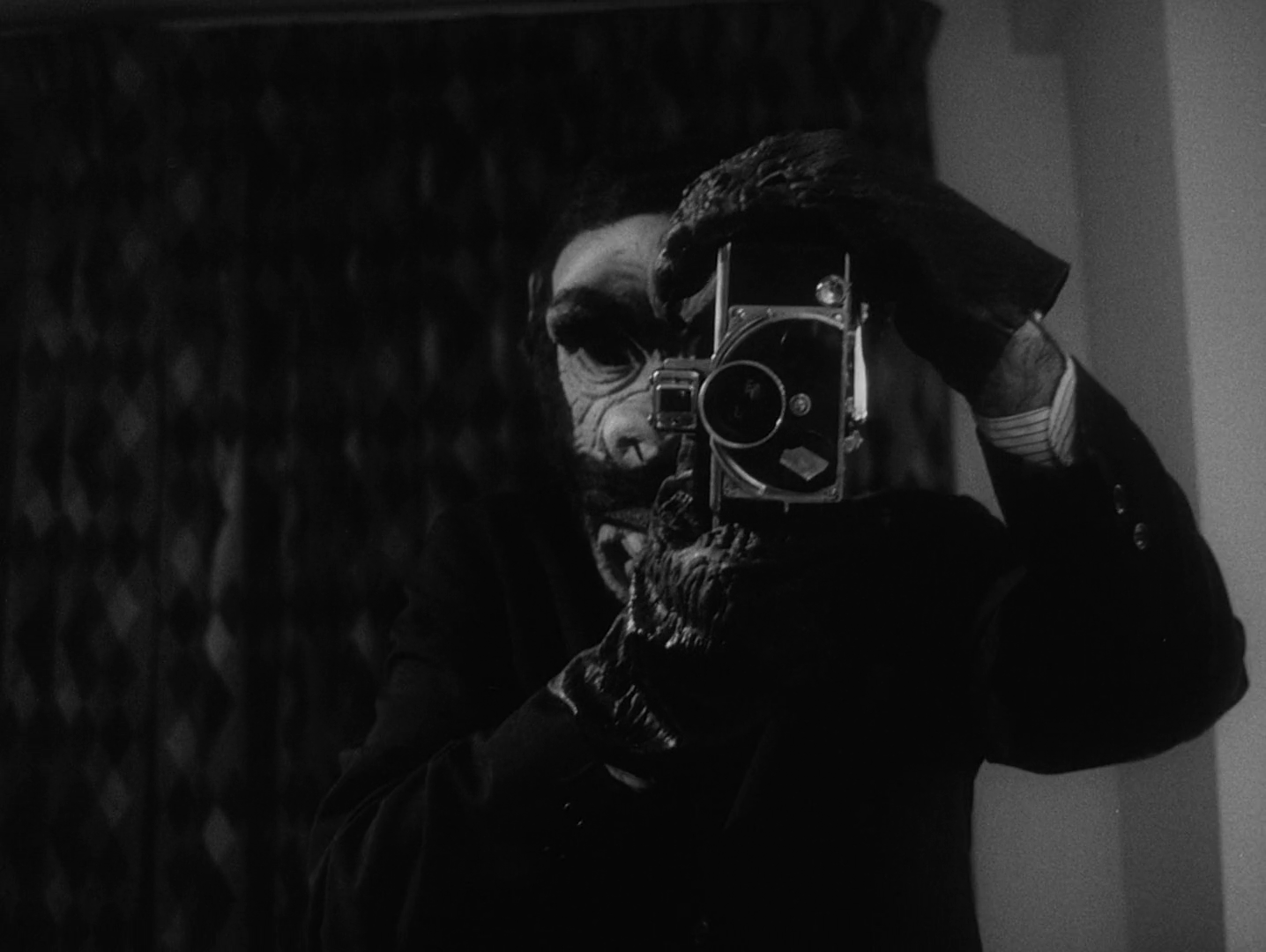
Don’t Look Now, There’s a Camera Behind You
Thursday, September 26, 2019
Don’t Look Now, There’s a Camera Behind You includes: Robert Downey’s “Chafed Elbows,” Paul Bartel’s “The Secret Cinema,” and Stan Brakhage’s “Blue Moses.”
Robert Downey’s “Chafed Elbows” (1966, 57 min, digital) had its world premiere at The Gate Theater in January 1967, where it ran for two months and then returned throughout 1967 and 1968. A mix of black and white 35mm photography and film, this comedy follows the lead character through two annual breakdowns, recollections of his hysterectomy, a therapy session where he brags about his affair with his own mom, and an episode where a street artist paints on him and escorts him to a gallery to sell. New York Times’ Film critic Bosley Crowther wrote that “there is in ‘Chafed Elbows’ a promising modicum of lively, acid wit.”
Paul Bartel’s “The Secret Cinema” (1966, 27.3 min) is a black and white film that opened at The Gate Theater in May 1968 and continued screening until midnight at The Black Gate Theater throughout the end of the month. Paul Bartel wrote, “It’s really a paranoid fantasy about a girl who thinks that all her friends are putting her on and filming her life with hidden cameras for exhibition in a secret theater. (They are, of course.)”
Stan Brakhage’s “Blue Moses” (1952, 10.5 min) is an early theatrical drama by Stan Brakhage that was featured in The Gate Theater’s New Visions Festival. Shot in the mountains, this black and white film features a diabolical actor who delivers a monologue to the audience members beyond the camera about the epistemology of film and the innate manipulations prevalent within the format.

The Hero Is Left with His Own Uncertainty and Fears
Friday, September 27, 2019
The Hero Is Left with His Own Uncertainty and Fears includes George Kuchar’s “Corruption of the Damned,” Mike Kuchar’s “The Secret of Wendel Samson,” and Bob Cowan’s “Moddle Toddle.” George Kuchar and Mike Kuchar’s films here screened together in The Kuchar Brothers double-feature program at The Gate Theater in September to October 1966.
George Kuchar’s “Corruption of the Damned” (1965, 55 min) follows two brothers on an Odyssean voyage through Bronx’s garbage dumps, hipster séances, aristocrat motorcycle gangs, violent union strikes, and twisted catfights. This film captures George Kuchar’s bizarre humor with grandeur. This silent film, with intertitles, was George Kuchar’s first 16mm feature and originally screened as part of The Gate Theater’s New Visions Festival.
Mike Kuchar’s “The Secret of Wendel Samson” (1966, 33.5 min) is a color film with sound that features artist Red Grooms as an impotent and distraught young man who thwarts the advances of his persistent female friend while simultaneously breaking up with his wealthy male lover. Overburdened by the boredom that ensues, with a lack of both creative inspiration and desire, he is kidnapped by a mob and forced to react. This film originally screened as part of The New Visions Festival and later as part of the Erotica Neurotica programs.
Bob Cowan’s “Moddle Toddle” (1967, 5 min) documents the solo after-party of a young woman (Donna Kerness) enjoyed after everyone else has fallen asleep. High-energy and hilarious, this film (which features a debut of a sleeping George Kuchar) originally opened for “Corruption of the Damned” at The New Visions Festival.

Protest, as an Expression of Patriotic Duty
Saturday, September 28, 2019
Protest, as an Expression of Patriotic Duty is a 16mm-film program that includes four independently produced films from 1960s: Bruce Baillie’s “Quixote,” Abbe Borov’s “Let It Shine,” Peter Gessner’s “Time of the Locust,” and Aldo Tambellini’s “Black Plus-X.” Much of this program was presented together at The Gate Theater's Angry Arts in Underground Films, which was affiliated with the Village-wide arts festival Angry Arts Against the War.
Bruce Baillie’s “Quixote” (1965, 45 min) is a black and white with color film that depicts a cross-country trip through North America shot over the course of 16 months between 1965 and 1966. The inclusive view of America recalls Robert Frank's legendary photographic series, taken a decade earlier. The film includes scenes from Nevada, Montana, South Dakota, Michigan, and New York; the Blood Indian Reservation in Alberta, Canada; and the civil rights march in Selma, Alabama. Its soundtrack includes Charles Ives, Ramon Sender and Bill McGinnes, Falcon Quartette, the Las Palmas Café Band, Acoma Song by Natai, and Apache Mountain Spirit Dance.
Abbe Borov’s “Let It Shine” (1968, 22 min) is a black and white film that follows a group of anti-Vietnam War demonstrators to the March on Washington, which took place on November 27, 1965. The national demonstration was organized by Students for a Democratic Society and drew crowds of an estimated 50,000 people to the capitol. The film is shot as a descriptive survey of the event, sharing the thoughts and concerns of participates and functioning as a filmic teach-in. It features the young men and women discussing and debating their political positions during their bus ride to the march, scenes of performances by musicians at the event, and excerpts from speeches by Coretta Scott King, SANE co-chairman Dr. Benjamin Spock, and SDS president Carl Oglesby.
Peter Gessner’s “Time of the Locust” (1966, 12 min) is a black and white film that blatantly critiques America’s activities in Vietnam through the combination of American newsreel footage, combat footage shot by the National Liberation Front of South Vietnam, and film footage taken from Japanese filmmakers—all overdubbed with pop music.
Aldo Tambellini’s “Black Plus-X” (1966, 8.5 min) is a black and white film with sound shot in New York City and Coney Island. By expressing black in terms of light rather than in terms of color, Aldo Tambellini encourages the possibility a new era that recognizes black power as a positive force. In an interview for arts/canada, Aldo Tambellini described his intention: "Black is one of the important reasons why the racial conflicts are happening today, because it is part of an old way to look at human beings or race in terms of colour... Blackness is the beginning of the resensitizing of human beings."

Going Inward Is Not Withdrawing
Sunday, September 29, 2019
Going Inward Is Not Withdrawing includes: Ed Emshwiller’s “Totem,” Stan VanDerBeek’s “Spherical Space no. 1,” Takahiko Iimura’s “Anma / The Masseur,” Mark Sadan’s “Rosebud,” and David Bienstock’s “Nothing Happened This Morning."
Ed Emshwiller’s “Totem” (1963, 16 min) features shocking color footage from Alwin Nikolais Company's dance production "Totem." Alwin Nikolais was the director of dance at the LES's Henry Street Playhouse, where he not only gained an international reputation as a pioneer in modern dance but also became known for his original electronic compositions and stage and light treatments. Ed Emshwiller was known for his experimental techniques with film and his interest in dance choreography (which could be considered early electromedia events). This film was part of a rare program at The Gate Theater that gave a solo screening program to Ed Emshwiller, whose work was featured throughout most of February 1968. (To circle back around, Kuchar-star Donna Kerness trained with Nikolais's Company, and both the Kuchar brothers and Bob Cowen's soundtracks were influenced by Nikolais's electronic compositions.)
Stan VanDerBeek’s “Spherical Space no. 1” (1967, 5 min) is a color film featuring the dancer Elaine Summers moving within a forest landscape, shot through a special spherical lens. Stan VanDerBeek and the intermedia-arts pioneer Elaine Summers worked on many films together, some of which were developed specifically for display in the expanded-cinema environment created by his Movie-Drome.
Takahiko Iimura’s “Anma / The Masseur” (1965, 13 min) is a black and white film that was presented as part of the Japanese Erotica program at The Gate Theater in March 1967. It was filmed during a dance recital with Butoh originators Tatsumi Hijikata and his Black-Dance Troupe. The title and intertitles refer to methods of enhancing blood circulation that are "usually practiced by the blind."
Mark Sadan’s “Rosebud” (1966, 5min) is a gorgeous silent black and white film that conveys a lingering portrait of a young woman peacefully resting at home in the days preceding her daughter's birth.
David Bienstock’s “Nothing Happened This Morning” (1965, 21 min) is a black and white film spliced with color that depicts a young man's life during the first moments after waking up. The filmmaker described it as a juxtaposition of three different realms of reality and an exploration of a universal experience. Yet rather than being mundane, this film is absolutely heart-wrenching.
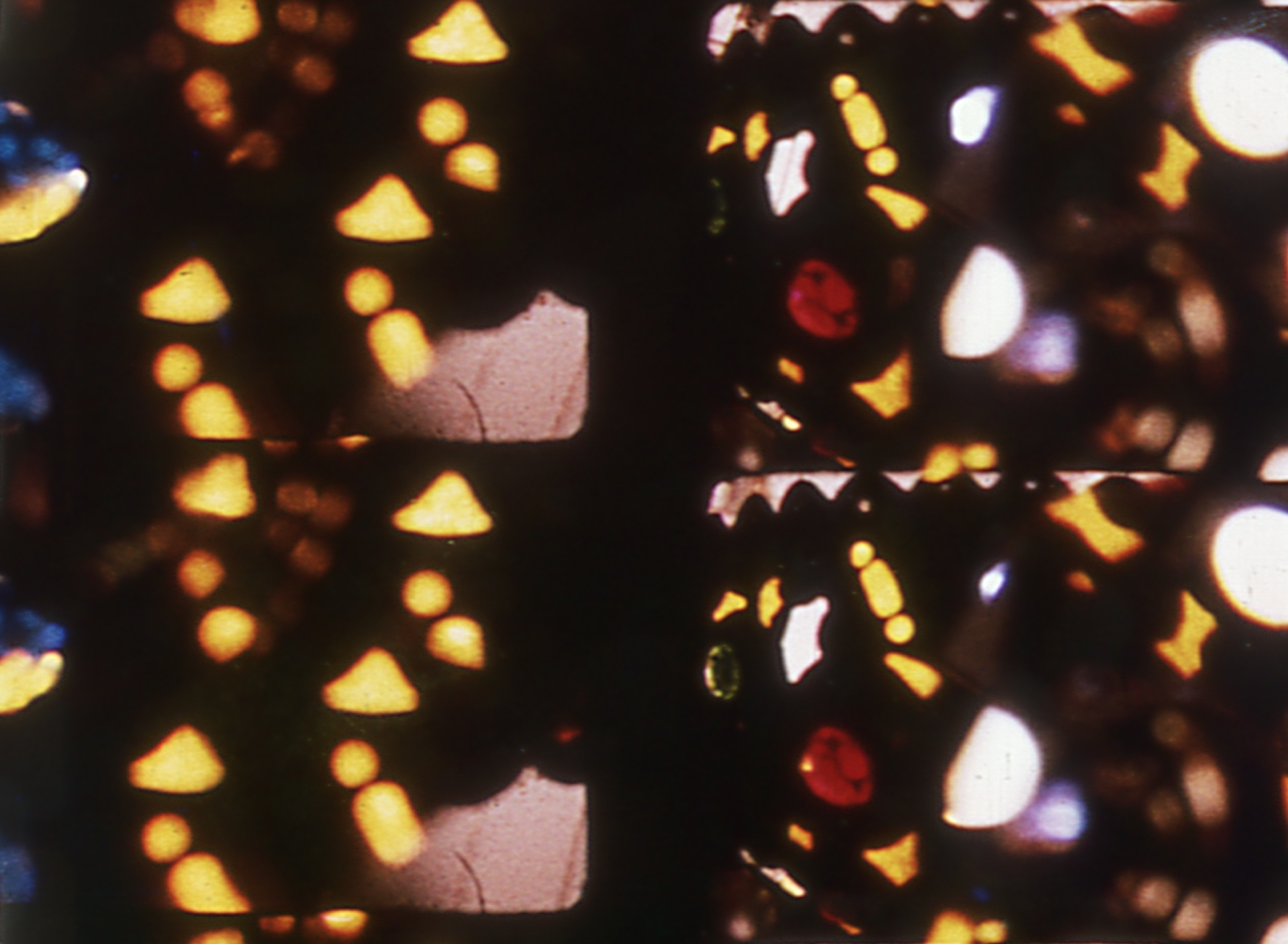
The Underworld of Sensory Derangement
Monday, September 30, 2019
The Underworld of Sensory Derangement includes: Maya Deren’s “The Very Eye of Night,” Jud Yalkut’s “Le Parc,” Aldo Tambellini’s “Black Is,” Storm De Hirsch’s “Peyote Queen,” Yoichi Takabayashi’s “Musashino,” and Marie Menken’s “Hurry! Hurry!.” Much of this program appeared at The Gate Theater together in the October 1966 program Psychedelia Tune In.
Maya Deren’s “The Very Eye of Night” (1958, 16 min) was Maya Deren’s last film. In black and white reverse print, this film features ethereal dancers who seem to emerge from and enliven the night sky’s constellations. The film includes choreography by Antony Tudor, special effects in collaboration with Marie Menken, and a musical score by Teiji Ito.
Jud Yalkut’s “Le Parc” (1966, 4 min) is a color film that features kinetic sculptures by the Argentinian artist Julio Le Parc that were exhibited at Howard Wise Gallery earlier that year. Jud Yalkut’s mesmerizing film never reveals the artworks nor the exhibition as a whole, but rather concentrates on expressive bursts of light and reflections of color escaping from form. The film is accompanied by an electronic score.
Aldo Tambellini’s “Black Is” (1965, 4 min) is a black and white film with sound, described in the Grove Press Film Catalog as follows: “The sound of a heartbeat and made entirely without the use of a camera, this film projects abstract forms and illuminations on a night-black background and suggests, says Tambellini, 'seed black, seed black, sperm black, sperm black.' ”
Storm De Hirsch’s “Peyote Queen” (1965, 9 min) is a hand-painted color film that features her scratched and processed film mixed with “live action: of abstract images, such as seen through refracted glass, and sounds provided by a ‘Haitian Voodoo Drum Ritual and Electronic Organ Rock ‘N Roll’ “ that provide steady, rapid, and complex rhythms throughout the film. Every art school film student has seen the digital transfer of this film, but to see the colors of the archival film in person is a magical experience to savor.
Yoichi Takabayashi’s “Musashino” (1965, 15 min) is a black and white film with sound that takes place in the woods of the legendary Musashino Plain, located on the outskirts of Tokyo. Originally part of The Gate Theater's Erotica Neurotica program, its eroticism is not explicit, but rather suggestive—a scopophilia or love of watching, of peeking, of lingering and observing both the woman in her affection for the woods and the evocative landscape.
Marie Menken’s “Hurry! Hurry!” (1957, 3 min) is a color film with sound described by Catrina Neiman as “composed of just three elements: sperm cells (so large that one fills the whole frame) struggling to reach an egg and dying one by one, to the sound of bombs exploding, and the whole piteous contest is viewed through the slowly pulsating flame of a candle.”
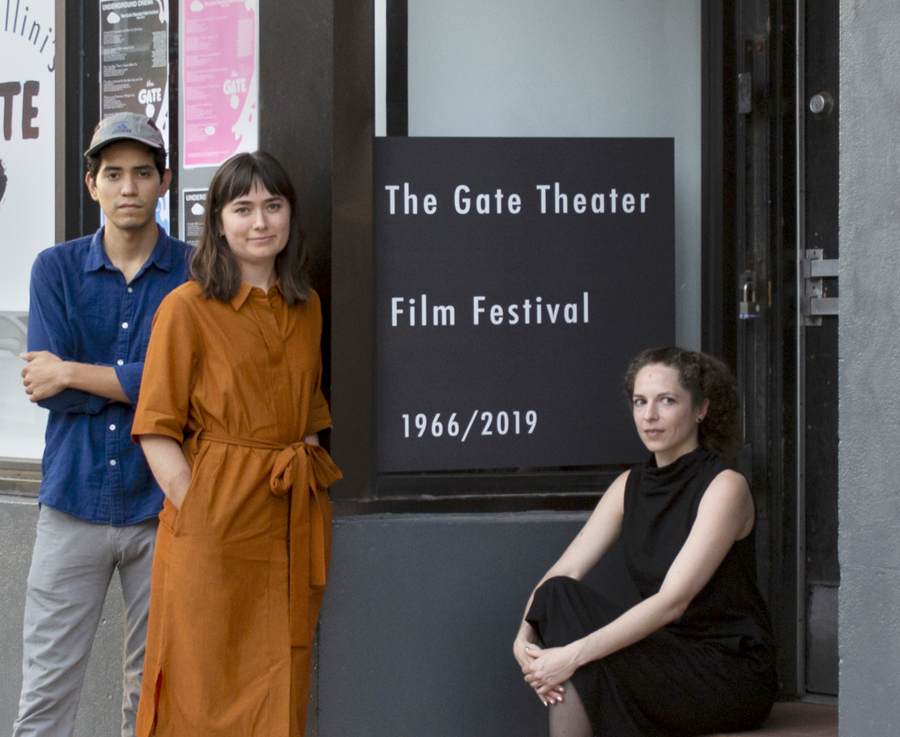
FILMFRONT is a community-based cine-club founded in July 2015 by Malia Haines-Stewart and Alan Medina. Dedicated to collaboration and open dialogue, filmfront—like The Gate Theater—is a place where audience members are not expected to have any previous education in, nor even exposure to, institutionalized fine arts.
THE GATE THEATER FILM FESTIVAL 1966/2019 is presented by curator and writer AMELIA ISHMAEL, as a tendril from her book manuscript The Black Gate Theater: Aldo Tambellini, Independent Film and Intermedia Performance in New York City’s Lower East Side 1965-1968; A Historic Revaluation of Experimental Arts Venues, Including The Bridge Theater and The Gate Theater.
THE GATE THEATER FILM FESTIVAL 1966/2019 is partially supported by an Individual Artists Program Grant from the City of Chicago Department of Cultural Affairs & Special Events, as well as a grant from the Illinois Arts Council Agency, a state agency through federal funds provided by the National Endowment for the Arts. Projection and 16mm equipment supplied by Chicago Film Society. Archival film prints are from the Film-makers’ Coop, Harvard Film Archives, and Janus Films.
Appreciation is extended to Aldo Tambellini, Anna Salamone of the Aldo Tambellini Foundation, MM Serra and Kaila Chambers of the New American Cinema Group/Film-Makers’ Cooperative, Bryan Wendorf of the Chicago Underground Film Festival, Patrick Friel of Cine-file and White Light Cinema (which brought Aldo Tambellini’s Black Films to Chicago in 2010), Josh B Mabe and Michael Metzger of CINE-FILE, Chelsea Spengemann of The Stan VanDerBeek Estate, Malia Haines-Stewart and Alan Medina (for not only hosting the festival, but also for being exceptional arts administrators), Julian Antos and Rebecca Hall of Chicago Film Society, Ben Ruder, Joseph Clayton Mills, Jamie Kempkers, and especially to Keefe Jackson.
*Photos On Site*
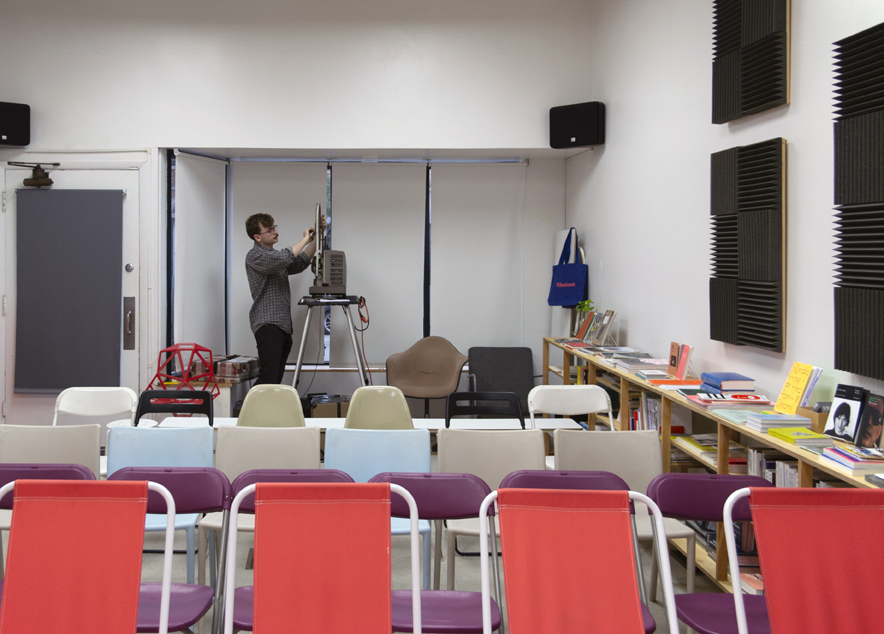

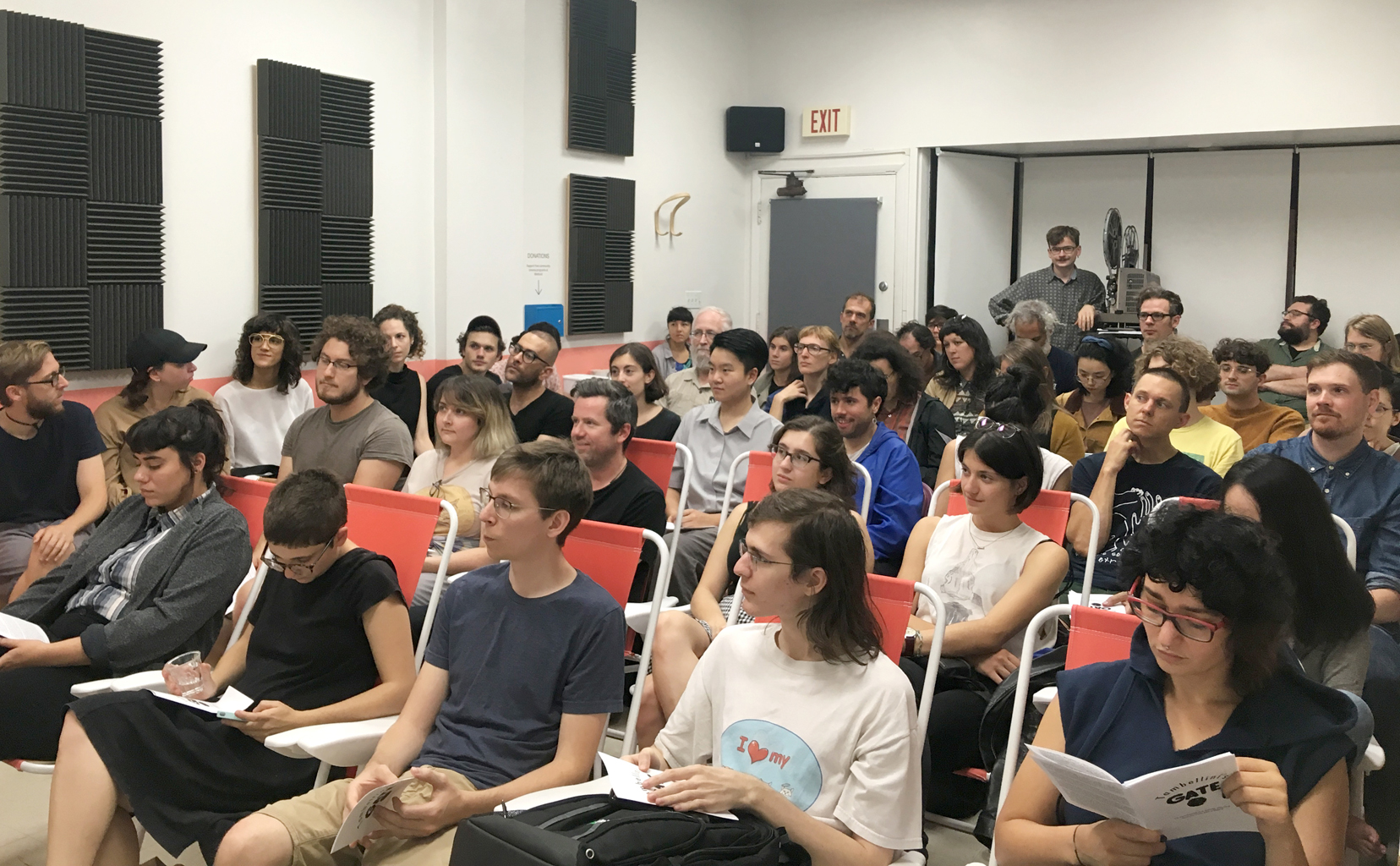
*Press Previews*
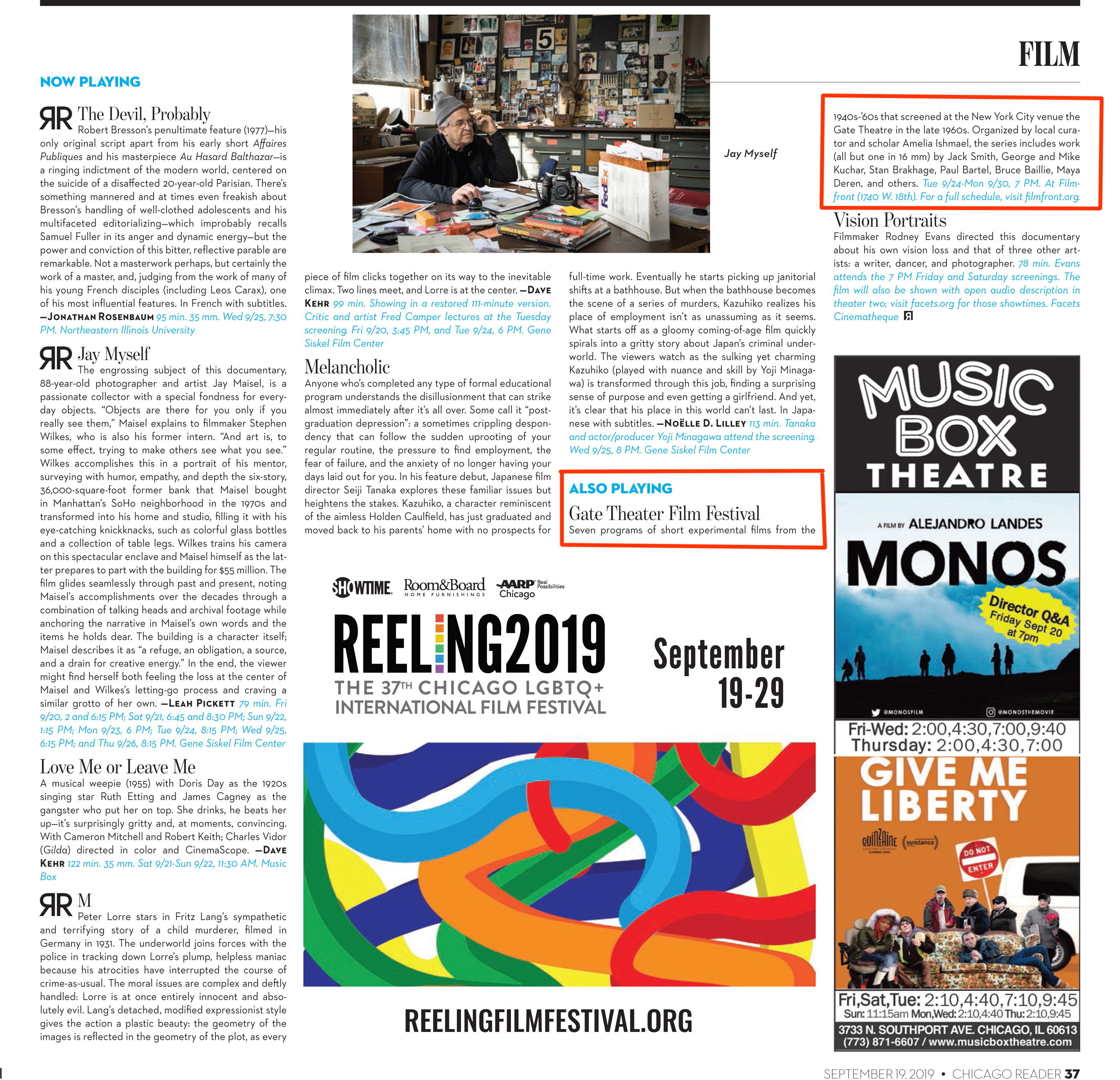
Chicago Reader (September 19, 2019)
Film: Now Playing
Gate Theater Film Festival
Seven programs of short experimental films from the 1940s-'60s that screened at the New York City venue the Gate Theater in the late 1960s. Organized by local curator and scholar Amelia Ishmael, the series includes work (all but one in 16 mm) by Jack Smith, George and Mike Kuchar, Stan Brakhage, Paul Bartel, Bruce Baillie, Maya Deren, and others.
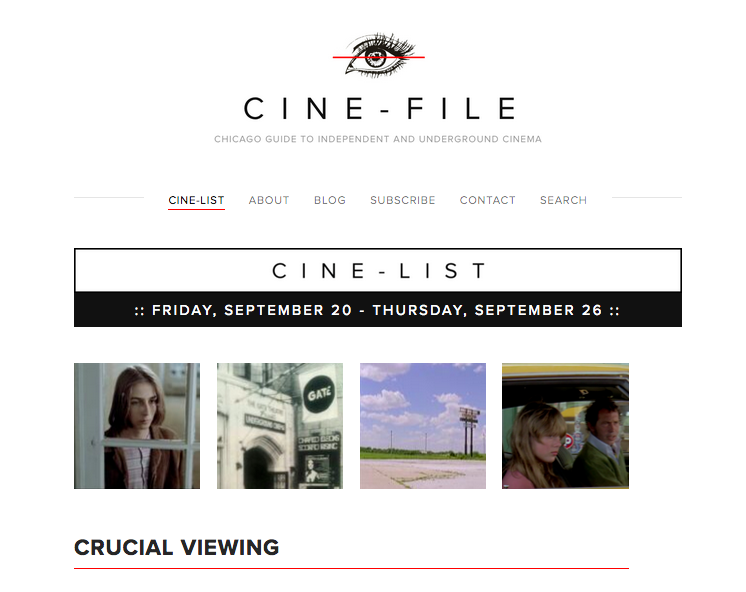
Cine-file (September 20, 2019 and September 27, 2019)
Cine-list: Crucial Viewing
Gate Theater Film Festival (Experimental Revivals/Retrospective)
The Gate Theater Film Festival is more of a screening series than a film festival per se; regardless, it’s a rich and diverse showcase of a selection of films from the 1940s through the 60s that all screened at filmmaker/artist/poet Aldo Tambellini’s Gate Theater in New York City during the late 1960s. It’s organized/curated by local scholar and programmer Amelia Ishmael, as an extension of her current research on the Gate Theater. With one exception, everything is showing in 16mm.
Previews for first week.
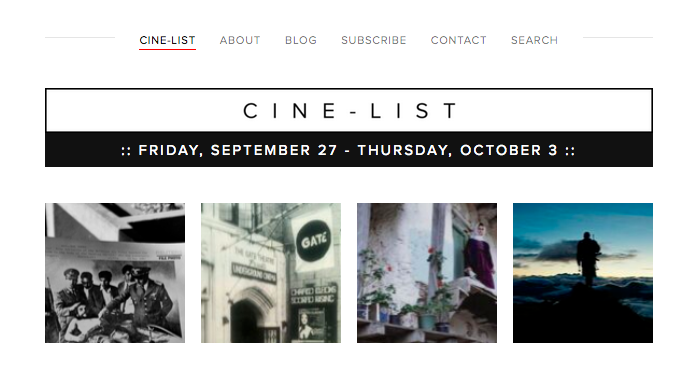
Previews for second week.